 |
||
|
||
| ||
 We keep on examining video cards based on the most powerful graphics processors NVIDIA GeForce4 Ti 4400 and 4600. All these cards are, in fact, identical to the reference sample; they just can or cannot have a VideoIn-VideoOut codec, 2 DVI connectors instead of d-Sub and DVI or can differ in coolers. It's interesting that although the reference card doesn't have heatsinks on the memory chips many manufacturers tend to cool down the memory as well. As usual, take a look at the articles related with the GeForce4 Ti line. Theoretical materials and reviews of video
cards which concern functional properties of the NVIDIA GeForce4
Ti GPU
The today's hero is an average card based on the GeForce4 Ti 4400 (the top Ti 4600 appeared simultaneously with the Ti 4400, and the junior Ti 4200 was announced a short time ago). The whole GeForce4 Ti line differs only in the frequencies of the chip and memory; besides, the Ti 4200 serves a base for both 128 MBytes and 64 MBytes cards. ABIT started production of video cards not so long time ago, beginning with the NVIDIA Riva TNT2Ultra in 1999. And since that it has been producing only NVIDIA based cards. ABIT products tested in our lab proved to be of high quality, especially the latest solutions based on the NVIDIA - GeForce3/Ti and GeForce4 MX. Today we are going to test the ABIT Siluro GF4 Ti card. CardThe ABIT Siluro GF4 Ti has an AGP x2/x4 interface, 128 MBytes DDR SDRAM located in 8 chips on both sides of the PCB.
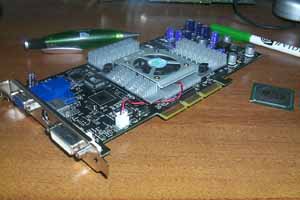
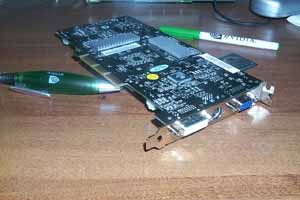 The Samsung 3.6ns memory chips correspond to 275 (550) MHz at which the memory works. When we took off the heatsinks the labels of the memory were hardly seen, that is why we didn't make a photo. The new BGA package and the new design allow the memory work stably at the rated frequencies even without cooling. Nevertheless, the memory is still cooled. The chip operates at 275 MHz. ABIT Siluro GF4 Ti
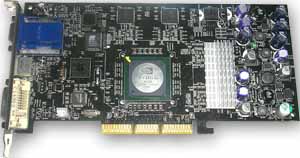
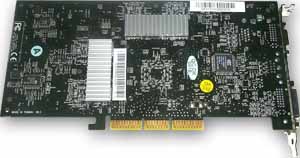 NVIDIA GeForce4 Ti 4400

 The card obviously follows the reference design. ABIT decided not to use the cooler recommended by NVIDIA and installed the same as they used in the ABIT GeForce3 line.
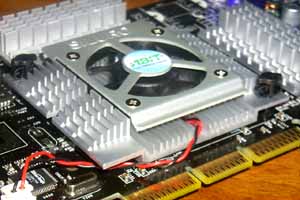 But the memory chips are coupled with heatsinks different from those of the GeForce3/Ti cards because now the memory modules are placed differently and have a different form because of the BGA package.
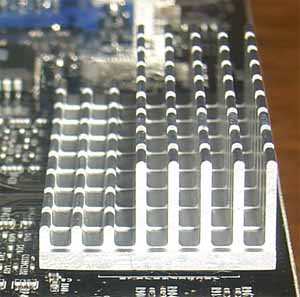 There are two memory heatsinks: a large one and a small one. The large one consists of two pin models. The smaller one is a pair of plate-type heatsinks. Each one covers two memory chips.
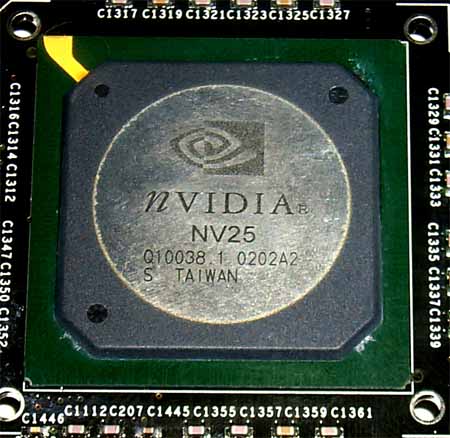 Here is the GPU (revision A2). It is codenamed NV25 and was produced at the beginning of 2002. Note that today there are already chips of the A3 revision with the official marking. The ABIT Siluro GF4 Ti card has a Conexant codec which controls the TV-out function. For details see our base review on the GeForce4 Ti. Remember that such long cards as GeForce4 Ti 4400/4600, which have a lot of capacitors in their tail-part, can be incompatible with some mainboards, for example, with EPoX 8KHA+. For details see the MSI GF4Ti4600 review. Besides, there can be problems with i815E mainboards, for example, with the Chaintech 6OJV2. See the Creative 3D Blaster 4 Titanium 4400 review for details. Apart from the TV-out, the GeForce4 Ti ABIT Siluro GF4 Ti comes with VGA and DVI connectors. The dual-monitor support and nView were already discussed earlier.
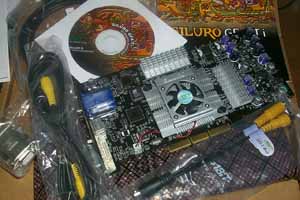
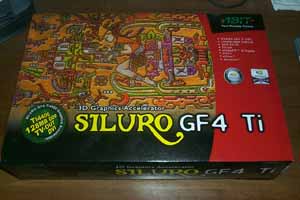 The card ships in the colorful retail package which includes:
OverclockingApart from the drivers (27.50/Win9x and 27.50/WinXP) there is a utility for making settings and overclocking - Graphics MAX. This sample works stably at 300/670 (740) MHz, i.e. we get a pure GeForce4 Ti 4600. Taking into account that in the GeForce3/4/Ti line the performance depends mainly on a GPU speed, rather than on a memory frequency, I can consider that the overclocked ABIT's card performs equally to the GeForce4 Ti 4600. Note:
 But in this case the huge heatsink is able to
cool down the card even at such high frequencies. Test system and driversTestbed:
The test system was coupled with ViewSonic P810 (21") and ViewSonic P817 (21") monitors. In the tests we used NVIDIA's drivers of v28.32. VSync was off, S3TC was off. For the comparative analyses we used the following cards:
Test resultsThe 2D quality is excellent, no problems up to 1600x1200@85 Hz. But it concerns only the tested sample which was coupled with the ViewSonic P817 monitor via the BNC. For estimation of 3D quality we used:
The tests were carried out in a 32-bit color mode. 3D Mark2001 SEToday I decided to examine anti-aliasing in the Direct3D with this packet. It's interesting to compare the close AA modes of the GeForce3 Ti 500 and GeForce4 Ti 4400. Note that all results are obtained at the Low Details mode (except Game4). Game1

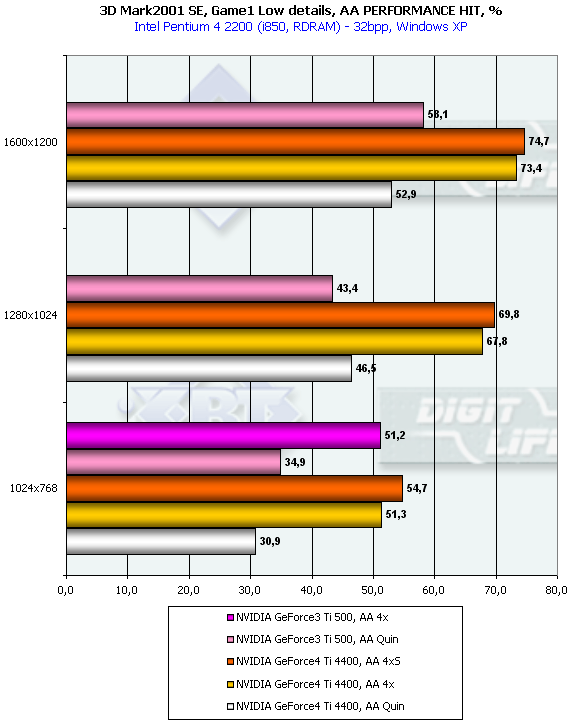 The AA quality of the Ti 4400 in all modes common with the Ti 500 has improved (probably thanks to the latest driver version because in our first reviews there were no difference in AA quality between the GeForce3 Ti and GeForce4 Ti). Besides, the GeForce4 Ti 4400 has a better performance. If you remember, the Ti 500 costs more than $300, and the Ti 4400 is already available at $280. Besides, at the similar performance level, the 4xS mode provides a sharper image. I guess that this is because the LOD BIAS level has become negative which takes place when the AA modes are activated, because both GeForce3 Ti and GeForce4 Ti have the same algorithms of the Quincunx and 4x modes. Game2

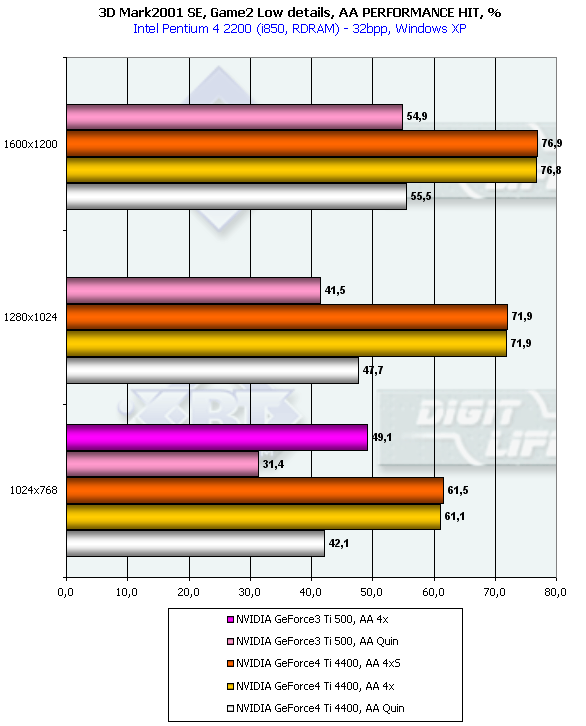 Here when the AA Quincunx is enabled the performance of the Ti 4400 falls greater than that of the Ti 500. If you remember, the Game2 has a higher overdraw factor than other 3DMark2001 tests, that is why it's important that mechanisms of clipping of hidden surfaces work well. According to the tests, the HSR efficiency of the Ti 4400 falls by a greater margin than that of the Ti 500 when the AA enabled. Game3

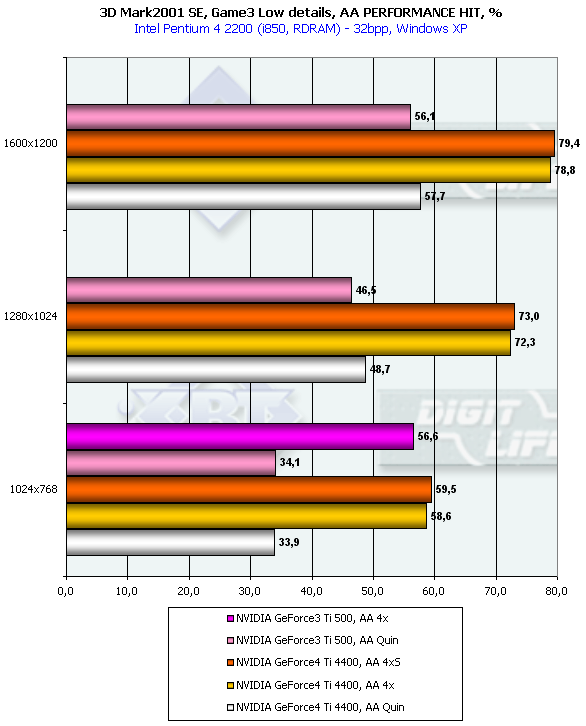 This test is something average between the previous ones, and the situation is very similar to the Game2, with the Ti 4400 performing a little better. Game4 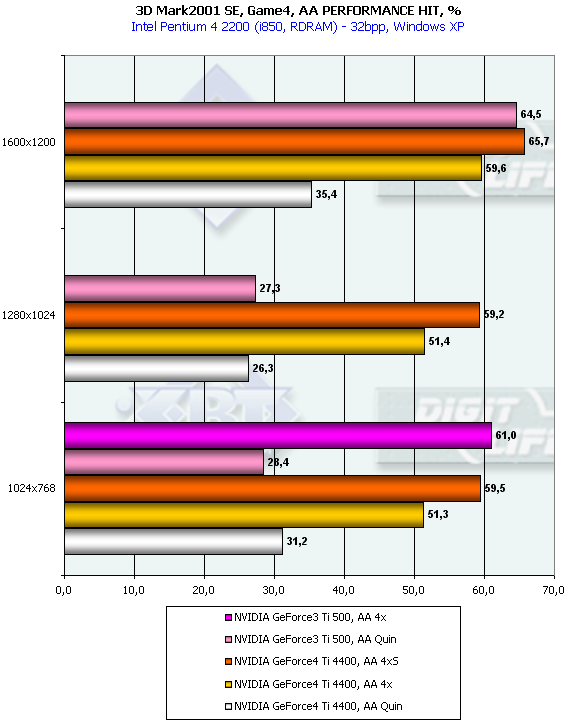 The Ti 4400 beats the Ti 500 when the shaders are enabled (I don't take into account 1024x768 because it is very dependent on the CPU). And even the AA activation helps the Ti 4400 much. In closing, I'd like to recommend you to read our 3Digest where you can find detailed information on performance of these cards on different platforms. ConclusionThe ABIT Siluro GF4 Ti which we have just tested is a copy of the reference card. When overclocked, it goes on a par with the GeForce4 Ti 4600 (though I haven't seen yet a Ti 4400 card which couldn't work at 300/325 (650) MHz). The latest official drivers from NVIDIA provide high-quality graphics with the AA enabled for GeForce4 Ti cards. But the performance drop is considerable, and sometimes it is greater than that of the Ti 500. Nevertheless, priced at $300, the ABIT Siluro GF4 Ti is an excellent substitute for the aging GeForce3 Ti 500 card. But if you have a Ti 500 based card, you have nothing to worry about until next NVIDIA or ATI solutions. Highs:
Lows:
Write a comment below. No registration needed!
|
Platform · Video · Multimedia · Mobile · Other || About us & Privacy policy · Twitter · Facebook Copyright © Byrds Research & Publishing, Ltd., 1997–2011. All rights reserved. |